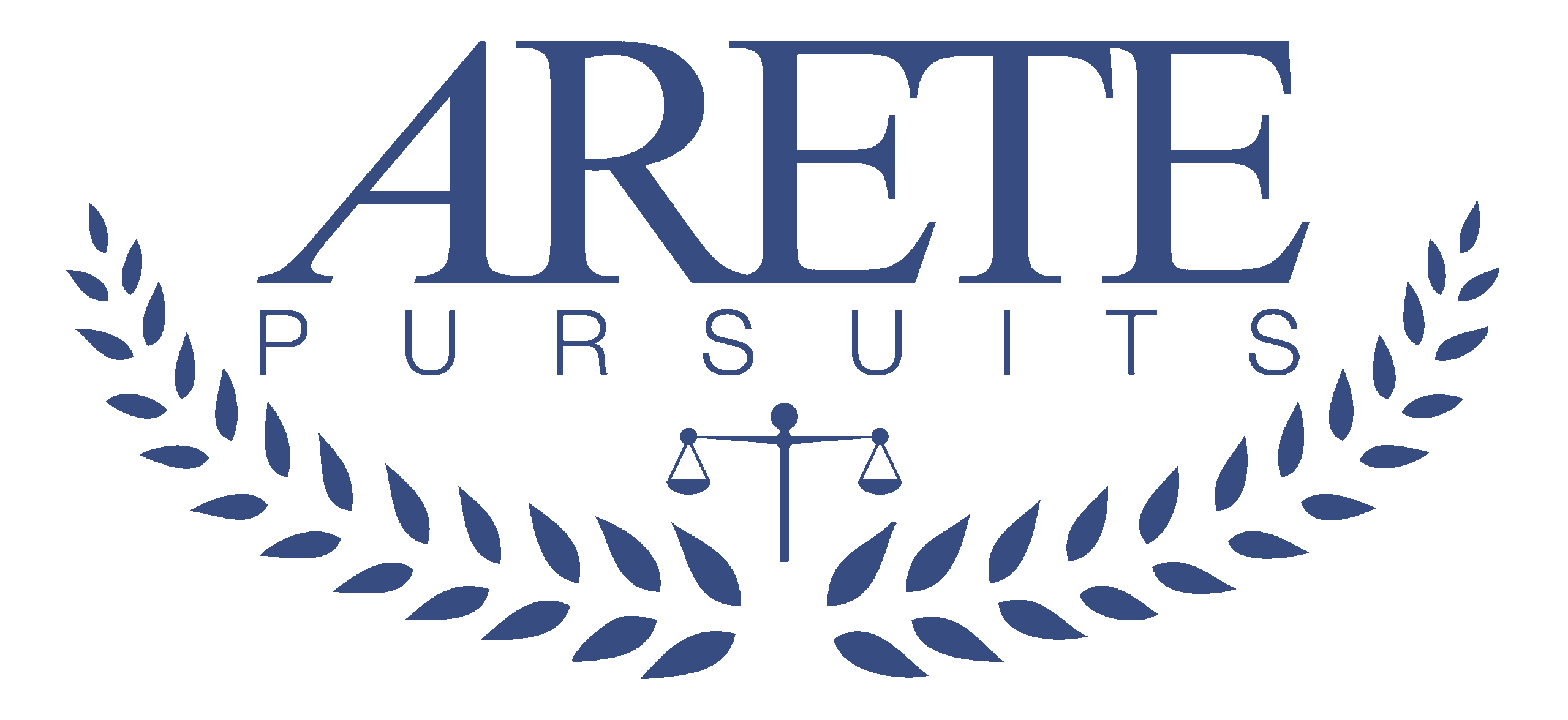One common thread in my work with senior leaders is a desire to shift from an operational focus to a more strategic perspective. Many leaders have flourished because they excel at execution. Someone else crafted the vision and strategy, and they executed the vision. As they move to more senior levels of leadership, they are asked to develop that vision and strategy, pushing them out of their comfort zone.
I also find leaders who have developed their strategic muscle but struggle to coach and mentor other leaders to shift from operational to strategic.
I’m often asked for a resource. People ask me what they can read to learn to be strategic. I find a surprising lack of great resources out there to support this. Plenty of books talk about how to craft a strategy or a vision, but few focus on a personal journey to strengthen our strategic gifts*. I think, in part, this is because the journey is so individual. Coaching seems better suited to growing in this area than reading a book, which is an inherently tactical and operational solution to the challenge.
Today, I build upon a previous post with several strategies for shifting one’s leadership style from operational to strategic.
This is one of the posts crafted to be shared widely, to support any leader in your organization. Please share and repost if it serves your community of leaders.
A Recap
This is my second post on the topic, and I highly recommend the first post as a starting point. Here’s a quick recap of the strategies from that post:
- Growth Mindset: Recognize that becoming strategic is a muscle you can develop, like any other skill. If you find yourself declaring, “I am not strategic,” remember to add the magic word – yet. “I am not strategic, yet.”
- Embodying Strategic: Identify physical spaces that support shifting into a more strategic mindset, including looking down from above, whiteboards, or being in nature.
- Dedicated Strategic Time: Scratch your operational itch by building time into your calendar that is dedicated to strategic thinking. Block off at least two hours per week where you deliberately pull out of the weeds, shut off distractions, and think strategically.
- Cultivating Strategic Relationships: Strategy is not a solo sport. Cultivate relationships with individuals who can help you think strategically and build your strategy. Approach them with an open mind, looking to learn from them.
- Use Your Wizards: Embrace your Default Mode Network (DMN), aka your wizards, to think more strategically about.
Here’s another set of strategies to consider.
Put Your Vision In Writing
Developing a vision feels like stating the obvious. I ask my coaching clients to build their vision for success in our time together. If our coaching is wildly successful, who will they be six months from now?
Many leaders are happy to think this through, but bringing language to that vision and articulating it in written form is another story. Invest the time and effort to write it down.
Once the leader has put pen to paper and written their vision down, we have something to focus our time together. For some clients, we open each session with me reading the vision statement aloud and then reflecting briefly on how the statement is resonating.
Your organization may already have a vision statement. If you are not the President/CEO, consider how that statement adapts to your team. You want something that resonates with your team and aligns with the organizational vision.
In my time at Datatel, our company vision was to take care of our people, recognizing that happy employees will take care of our clients, and happy clients will support the health of the company. For software development, caring for our people translated directly to my team. Taking care of our clients meant delivering high-quality products within the timeframe we promised we’d deliver. We supported the company’s financial health by focusing on productivity, ensuring we made efficient use of the company’s finances and were continuously improving.
For another lens, in The Advantage, Patrick Lencioni offers six prompts for consideration around vision, suggesting that clarity, alignment, and discipline are more important than a lofty vision statement:
- Why do we exist? – This defines the organization’s core purpose and mission.
- How do we behave? – Establishing core values and expected behaviors.
- What do we do? – A straightforward statement about the organization’s work.
- How will we succeed? – A strategy that sets the organization apart.
- What is most important, right now? – Identifying the top priority.
- Who must do what? – Clarifying roles and responsibilities.
Brainstorm your vision. Get something in writing. Don’t focus on perfection. Focus on good enough and iterate as you build your strategic muscle.
Delegate
I recognize that delegation may feel like an operational, tactical solution. Many leaders struggle to shift to a more strategic mindset because they cannot successfully delegate their more tactical duties to their direct reports.
As I described in a previous post, there are many reasons why this can happen. Perhaps the most effective strategy is mastering the art of an effective request.
If you struggle to free up the time to think strategically, look at where your time is going. Find opportunities to let go of the tactical, day-to-day work and delegate to your team.
Learn
At each stage of your leadership journey, you have had new challenges with new learning opportunities. This stage is no different. What may be different is how deep you go in your learning.
A common metaphor to characterize skill sets is T-shaped skills. Some individuals are specialists, like the vertical bar of the T. They have deep expertise in a focused area. Other individuals are generalists, like the horizontal bar of the T. They have expertise across a wide range of areas, but that expertise does not go very deep in any area.
Shifting from operational to strategic often involves moving from specialist to generalist. As we rise in leadership scope, our area of learning becomes wider. If we use a specialist mindset to learn all these new areas, we will never keep up.
My defining moment was when I was promoted to VP of Software Development for Datatel and joined the executive team. For the first time in my career, my peers were not in software development. They were sales, finance, marketing, HR, and services. Collaborating with these peers required developing a wide range of new expertise, and I could not afford to become an expert in any of those areas.
Consider your vision. What areas of learning do you need to prioritize to support that vision and strengthen your ability to craft future strategies and visions? Where do you want to shift your learning from specialist to generalist?
Measure
Measuring is another paradoxical area when it comes to strategy. Measuring results feels inherently tactical. However, a well-crafted goal and measure can keep you operating at a strategic level.
I love to use the OKR (Objectives and Key Results) approach to focus efforts, particularly over 90 days. If you’ve refined this muscle, consider shifting the time horizon. What are your one-year objectives? Your five-year objectives? Can you craft goals (in OKR format or otherwise) that enable you to bridge between a long-term strategy and short-term tactics?
One approach I often use here is 5-4-3-2-1 planning.
- Identify a five-year goal.
- Identify what needs to occur in the next four months to achieve the five-year goal.
- Identify what needs to occur in the next three weeks to achieve the four-month goal.
- Identify what needs to occur in the next two days to achieve the three-week goal.
- Identify what needs to occur in the next hour to achieve the two-day goal.
One word of caution: Long–term goals are going to be more fluid than a 90-day OKR. Use them to elevate your thinking to a more strategic level, and accept that you will revise them as your strategy execution unfolds.
Reflect
In the prior post, I talked about remodeling your calendar to create space for strategic thinking. That’s an important first step. Many leaders go through that exercise but fail to take advantage of the time. Either they give the time up for an emergency, or once they get to that scheduled time, they decide to focus on something tactical rather than using the time as originally intended.
Develop a ritual around reflection. My ritual includes shutting down all notifications so I cannot be distracted. I have a checklist of prompts to stimulate my thinking and reflection.
Here are some prompts to consider for your reflection:
- Do my behaviors and actions align with my vision and strategy?
- Do my team’s behaviors and actions align?
- Is this strategy still valid for the current landscape?
- Where do I need to focus my learning to advance the strategy?
- Who do I want to connect with to support the strategy?
Many of my leaders use our coaching time for this sort of reflection. They find that hour to be a space where they can be fully present, out of the weeds and supported by a confidential thought partner. If you don’t have a coach, who else could provide this kind of support?
Putting It Into Practice
Choose the strategies that will best support you to shift from operational to strategic:
- Adopt a growth mindset. You are strategic.
- Embody strategic by finding environments that support strategic, creative thinking.
- Remodel your calendar to have time set aside for strategic thinking.
- Build relationships that support your strategic muscles.
- Put your Wizards to work by engaging your Default Mode Network to support strategic thinking.
- Develop your vision. Put it in writing.
- Delegate to free yourself up to be strategic.
- Build a learning plan that shifts from specialist to generalist.
- Build longer-term goals and measurements that elevate your thinking.
- Build a ritual for reflection on strategy and vision.
Walkabout Corner
This is an unusually long post, so I’ll keep my walkabout update brief. It continues to be an exquisite journey and a profound period of growth. I’ll share more in a future blog post when I reflect on the impact of embracing openness.
I am an executive coach and life coach with software executive roots in higher education and EdTech. I coach because I love to help others accelerate their growth as leaders and humans. I frequently write about #management, #leadership, #coaching, #neuroscience, and #arete.
If you would like to learn more, schedule time with me.
Want to comment? Join the conversation on LinkedIn.
* I frequently recommend The Advantage by Patrick Lencioni. This provides a framework for senior leaders that can serve as scaffolding to support your emergent strategic gifts.

